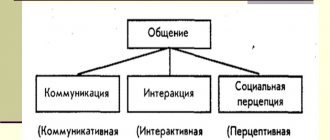There is a type of communication that is carried out with the aim of transferring certain knowledge and skills, that is, it contains the main mechanism of learning as such. Thus, pedagogical communication is a multi-level and professional communication between a teacher and students, which includes not only the direct learning process, but also the establishment and improvement of communication processes between the teacher and students, and the establishment of mutual understanding. The peculiarities of pedagogical communication also lie in the fact that its effectiveness is directly expressed in the satisfaction of both parties (teacher and students) regarding the satisfaction of the needs that are relevant to them.
Pedagogical communication style
At the moment, there is far more than one style of pedagogical communication. A wide range of different styles, as well as the style chosen by the teacher, directly influences the further formation of the student’s personality.
The teacher’s communication style is understood primarily as the methods and methods of educational influence chosen by the teacher himself on his students. They. In turn, they are determined by a number of expectations and requirements regarding the behavior of students that the teacher sets for himself. The style itself is expressed in how the teacher implements organizational activities, communication with and between children, and what methods he has at his disposal for implementing reliable relationships with children. In pedagogical practice, there are 3 main styles, these include authoritative, democratic and liberal styles of pedagogical communication.
Authoritarian parenting theory
This style implies a complete dictatorship. The child is kept under very strict control, so to speak, “with a tight rein”, prohibiting almost everything that can bring him joy.
If you imagine the “carrot and stick” method, then in this style of authoritarian education there is no carrot at all, only a stick. In fact, the only thing parents do is punishment, which the child is terribly afraid of.
This method has always caused heated debate among educators, dividing scientists into two camps. In the first, they proved that this brings positive results, developing obedience, integrity and organization in the offspring. The latter, on the contrary, spoke out categorically against the authoritarian type of education, explaining this by the fact that such children grow up with certain mental disorders and a completely suppressed will.
So what can actually be identified as the positive and negative sides of this method?
Democratic communication style of the teacher
It is generally accepted that the most effective and acceptable is the democratic communication style of the teacher. The main feature of this style is wide contact with children, a general manifestation of respect and trust, while the teacher himself establishes maximum emotional contact with his students and in no way suppresses their individuality. Communication with children in this situation is also expressed by frequent positive assessments, the absence of real punishments, and severity.
This style is complicated in that it requires appropriate dedication on the part of the students themselves, without which the implementation of the desired atmosphere of mutual respect is not possible. In many ways, everything depends on whether children are able to correctly perceive their mistakes and how they are aimed at various forms of joint activity. Most often, the work of a “democratic” teacher is aimed at stimulating children’s motivation to learn, evokes exclusively positive emotions, and thereby only encourages a thirst for knowledge. Studying with such a teacher develops an understanding of the values of relationships, mutual respect and teamwork, and creates a sense of self-confidence in children.
Teacher's authoritative communication style
“Authoritative” teachers are marked by a completely opposite point of view and approach to teaching. First of all, they are selective regarding their students. It is they who are most often inclined to introduce various kinds of prohibitions, strict rules, restrictions, and resort to punishment. In other words, the teacher’s authoritative communication style is a manifestation of rigor and steadfastness. Such a teacher expects constant and submissive obedience from his students. Resorting to a large number of educational measures, while all of them are monotonous.
It should immediately be noted that this style leads to increased conflict and hostility in relationships, and therefore creates an extremely negative atmosphere for teaching and upbringing, especially for schoolchildren. Most often, teachers resort to an authoritative style solely with good intentions to raise the child as best as possible. From their point of view, if you break children and achieve maximum effect by suppressing “unnecessary individuality” with your authority, then you can achieve maximum effect in the shortest possible time. However, this attitude causes children to feel rejected, depressed and insecure, which most often leads to very negative consequences.
Liberal communication style of the teacher
This style is characterized by irresponsibility, low initiative and persistence on the part of the teacher. There is also inconsistency in the demands put forward by him, and a lack of decisiveness necessary in the event of difficult situations. A “liberal” teacher is able to put forward any requirement or rule to his students in an instant and then, forgetting about it, come up with a new one, completely opposite to the previous one.
Most often, a teacher’s liberal communication style is expressed by the dependence of assessments of students’ activities through the prism of the teacher’s personal mood. He often overestimates the abilities of his students and does not check to what extent the requirements for the task have been met. If the teacher himself is in a good mood, the children get good grades; otherwise, they get bad grades.
Despite everything, such a teacher is always friendly to his students, always communicates affectionately and reservedly, and perceives each of them as necessarily an honest and good person.
It should be noted that the peculiarity of pedagogical communication is not something predetermined or chosen, but is formed in the process of the teacher’s life. Thus, one cannot say that one adopts a completely democratic or a completely authoritative style. Most often there are mixed options, for example, democratic and liberal, or democratic and authoritative.
An important role is played by the psychological and pedagogical relations of the individual. Further tactics of communication and teaching depend largely on the personal experience of the teacher. His communication style is influenced by his direct relationship with students, the ability to communicate with them in an informal setting, communication with other teachers, representatives of various public bodies and control over education. It should be noted that the competence of the teacher himself regarding the child’s psyche, the characteristics of children’s development in a certain period of life, and the ability to establish trusting contact with them is also significant.
Classification
Communication styles in psychology are most clearly manifested in the business sphere, in boss-subordinate interactions or between equal partners. Most researchers have based their classifications on research in this area.
The second most important area of study of communication styles is pedagogy. A clear manifestation of types occurs in the interaction between teacher and student.
According to K. Levin
The first classification of communication styles was created in 1939 by a group of scientists led by K. Lewin. The classification is the simplest, but due to its clarity, remains the most popular to this day.
The study of the issue was carried out in the field of leadership using an experimental method. Different groups of students completed identical tasks under the guidance of mentors who represented different styles of leadership communication.
| Style | Description | pros | Minuses |
| Authoritarian (directive) | The leader’s communication with the team comes down to sending instructions (directives), which are not subject to discussion and are mandatory. The subject of interaction makes sole decisions on issues of personal actions and the actions of other subjects. The opinions and convenience of other subordinates are not important. The personal initiative of each team member is not encouraged. Leadership is carried out using methods of dictatorship and hyper-custody. | Can have a positive effect in cases where the leader is the most competent person and quick decisions are needed when urgent action is needed, without discussing the opinions of other team members. | Rigid management, which does not take into account the opinions of experienced employees, leads to abuse of power, the development of conflict situations, and staff turnover, as a result of which knowledgeable specialists are lost. |
| Liberal (permissive) | The role of the leader is reduced to a minimum, as is his responsibility for the results of his activities. There is no control over the process or occurs selectively, unsystematically. In communication, indifference to the problems of the team and individuals is manifested. | It can be useful in a society where all team members have equal competence, qualifications and perform strictly defined isolated actions. | Irrational use of resources and time. Lack of control leads to a lack of motivation and loss of interest in the results of work. Hidden conflicts within the team. |
| Democratic | The style assumes the active participation of the leader in the activities of the group, while taking into account the point of view of each employee. The leader provides general guidance and control, provides assistance, encouraging the active work of everyone. Important decisions are made jointly. Management methods - requests, explanations, recommendations. | This leadership style implies high competence and impartiality of the leader. It is not always appropriate to demonstrate democracy in critical situations when urgent decision-making and implementation of actions according to strict instructions are required. | The manager's democratic communication style is recognized as the most effective. In this case, everyone’s potential is maximized, but at the same time discipline is maintained and high motivation is present. |
According to S. Bratchenko
The modern interpretation of interpersonal communication styles, developed under the leadership of Sergei Bratchenko at the end of the twentieth century, is also popular in psychology.
The styles identified in this classification, according to scientists, are found equally in various situations of interpersonal communication.
- The authoritarian style involves a focus on leadership and suppression of the interlocutor’s personality. This style of communication defines aggressive communication, egoism, and the requirement of complete agreement with one’s position. The interlocutor’s opinion is suppressed and not taken into account.
- The dialogical style of communication is based on trust and mutual understanding. The dialogue is conducted with respect for the opinions of all parties, which are focused on cooperation and mutual self-expression.
- The algerocentric style manifests itself when an individual’s communication is aimed at the needs of the interlocutor. Self-interests are ignored and voluntarily suppressed. The primary task is the development of the interlocutor, sometimes to the detriment of one’s own well-being.
- The manipulative style is focused on dialogue with the aim of using information for personal interests. Communication interlocutors act as means to achieve a specific individual goal. There is some cunning in communication: you should understand the interlocutor as best as possible in order to obtain information, while deeply hiding your intentions.
- A comfortable style implies a willingness to accept the position of the interlocutor, without wanting to express one’s point of view. An interlocutor who is characterized by this style of communication does not strive to conduct a constructive dialogue, to reveal his position, as well as to understand the position of his partner. Complete agreement with the point of view of the interlocutor, without delving into the essence.
- Indifferent - a style that manifests itself in a complete reluctance to communicate. The goal is to close the problem, no matter in what way, and walk away from cooperation.
According to L. Petrovskaya
Leading Russian social psychologist Larisa Petrovskaya (1937 – 2006) based her classification of styles on the factor of the situation itself in which communication arose.
Based on this, she identifies 3 main communication styles:
- The ritual style aims to satisfy the need to belong to a social group, a certain sphere of relations. The purpose of communication between partners is to maintain connections with the surrounding society. A partner in such a situation is a necessary attribute of achieving the goal. Ritual communication implies knowledge of the rules of a given society. Personal interests and characteristics are not taken into account in this case. The manifestation of a ritual style is most often characteristic of a society of people who have known each other for a long time or for organizations with a stable team.
- The manipulative type of communication is manifested in the use of partners to perform one’s own tasks. This is not always a negative thing. By presenting their best qualities and advantages to each other, partners solve many problems and each win in their own matter. To use this method of communication, you need to have skills in manipulating people.
- The humanistic style is manifested in equal interaction, when partners do not aim to promote purely personal interests, but care about the comfort and self-realization of the partner. In the process of communication, the parties support each other, respect the opinions of others, and do not try to manipulate or re-educate. The main conversational genre in this case is dialogue, during which all points of view are expressed. The decision is made on the basis of agreements and compromises, by the opinion of the majority. The humanistic style is the most democratic, but often in solving important production problems it is effectively used as an auxiliary option.
In social psychology
Each person has his own special style of communication, not only in the business sphere. In social psychology, there are several styles that classify a person’s behavior in communicating with others.
- A creative-productive (joint creativity) style allows all participants in joint activities to demonstrate their best qualities. In this case, partners strive for a common goal and find a single correct solution through joint efforts. Professional competence and personal ethical qualities are most clearly demonstrated.
- A friendly style involves communication based on respect and friendly disposition of partners towards each other. Sincere interest in the partner's personality and openness to him are a prerequisite for success in business.
- The distance style is widespread in the field of pedagogical communication, in the “teacher-student” connection. Distance determines the leading role of one of the participants and emphasizes the partner’s differences in age, social status, professional competence and other qualities. When maintaining this style of communication, it is important to choose the right area of its application in order to maintain a reasonable distance, but not go to the stage of complete detachment and dictatorship.
- The suppressive (mentoring) style is an aggressive manifestation of the distance style. In this case, one of the partners takes on the role of an all-knowing mentor-mentor, so that the opinion will be the main and unquestioning one. A constant patronizing tone in dialogue can lead to a breakdown in trusting relationships or a complete cessation of contacts.
- The flirting style can be seen as the unproductive extreme of the friendly style. The manifestation of the appearance of friendship is in this case insincere in nature, the goal is to gain artificial authority from the desired person. Often found in relationships between adults and children or in communication with subordinates of an inexperienced manager. Flirting can play a positive role in the beginning of a relationship between two people of the opposite sex.
Depending on the orientation of the individual
Communication styles in psychology are also classified depending on the orientation of the person:
- Executive – focus on carrying out assignments in accordance with the chain of command and accepted interpersonal contacts.
- Initiative – focus on one’s interests and business.
- The aggressive style is characteristic of individuals who strive to achieve success by controlling the actions of others.
- The aloof style is manifested by independent behavior and attempts to maintain a certain distance.
- The altruistic style is focused on helping others, to the detriment of one's own interests.
- Missionary – careful influence on other people.
- The attentive style is manifested by such signs as a sincere interest in the affairs of others and the ability to express grace.
- The transformational style is sometimes used by business people when, by appealing to high ideals, they try to direct their interlocutor to change their previous goals.
According to the criterion of adequacy of methods and means of communication
Classification of communication styles is also carried out according to the level of adequacy of methods and means of communication.
Based on these factors, 3 styles are distinguished:
- Flexible is a style characterized by a high degree of adequacy in the choice of communication means and behavior. Understanding the emotional state of the partner and the purpose of communication.
- Regular - a style in which there is no assessment of communication capabilities and analysis of communication strategy. The emotional state of the interlocutor is not subject to assessment, the subtext of the message is not considered.
- The transitional style combines the characteristics of flexible and rigid styles, depending on the circumstances.










